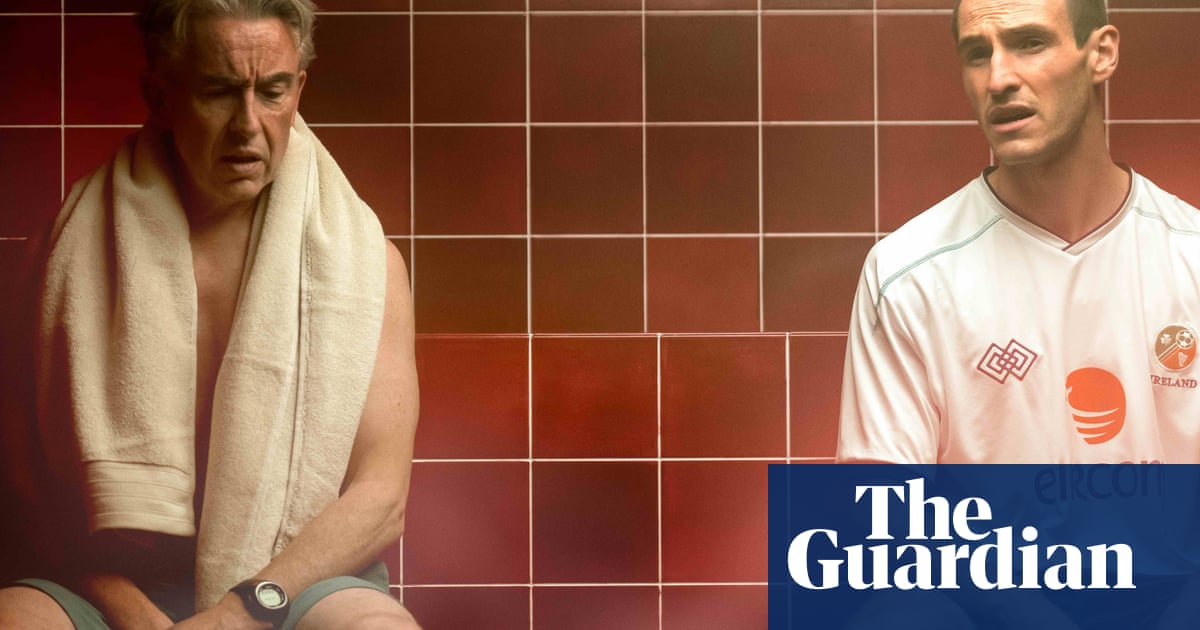Watching theteaser trailer for Saipanbefore its cinematic release later this summer called to mind that episode of Friends in which it is revealed Joey leaves his copy of The Shining in a freezer whenever it becomes too scary for him to continue reading. While 23 years may have passed since Roy Keane’s fabled eruption on the eponymous volcanic speck in the western Pacific, it is hard to get past the feeling that the makers of this drama-biopic might have been better off leaving the most seismic row in Irish football history and its accompanying media frenzy hidden among the frozen peas, ice-cream and portions of batch-cooked lasagne. Instead it is about to be sent out into a public domain where it will almost certainly reopen old and, in many cases, still festering wounds.
Everyone of a certain age with a passing interest in football has their own version of what happened in Saipan that they believe to be true, although the details often differ depending on who happens to be doing the telling at any given time. Over the years I have chatted to several formerRepublic of Irelandfootballers who were present at the infamous team meeting where Mick McCarthy held aloft a copy ofthatinterview given by Keane to the Irish Times and asked his captain to explain comments that were scathing in their criticism of the national association’s laissez-faire attitude when it came to preparing for the 2002 World Cup in Japan and South Korea in the immediate run-up to the competition.
Of those who have been prepared to revisit the subsequent vicious takedown of McCarthy by his star player, no two versions have been consistent, although everyone seems prepared to agree that the phrase “stick it up your bollocks” was definitely uttered. Years after the event, Tom Humphries, the famous Irish sportswriter with whom Keane’s controversial interview was conducted, wasimprisoned for unrelated child sexual offences. There will inevitably be a morbid audience fascination in how, or if, his critical role in proceedings is portrayed in Saipan, which has been directed by the husband and wife team of Glenn Leyburn and Lisa Barros D’Sa.
While accounts of the precise nature of what happened vary, either by his own or his manager’s volition, Keane subsequently left the camp, flew home and ultimately refused to return despite diplomatic interventions by Sir Alex Ferguson, the Irish prime minister and one particularly overwrought RTÉ journalist who was granted a TV interview with the midfielder. Ireland went on to advance through the group stages of the tournament before going out to Spain on penalties in the second round. Meanwhile in Cheshire, Keane spent the tournament walking his labrador Triggsaround a golf course while being followed by nervous reporters and a paparazzo. In Ireland everyone took a view and was either a Keane apologist or a McCarthyite. In weeks to come, everyone will get to take another, far more literal view.
Saipan has a yet-to-be-confirmed cinema release date and the early signs are good, even if the reception to the teaser on social media was not. With monotonous predictability, an army of amateur critics who appear to have no concept of what a film actually is wondered what the point was in making one about something interesting that happened a long time ago. Others angrily observed that some of the actors don’t look enough like the real-life people they’re playing. And while it can legitimately be argued that Éanna Hardwicke does looks more like a young John O’Shea than Keane, and that Sam the Eagle from The Muppet Show might bear a more uncanny resemblance to McCarthy than Steve Coogan, both leads are renowned for their deftness at playing complex characters.
Leyburn and Barros D’Sa have previous in the field, their extremely charming and often hilarious second feature Good Vibrations having received the accolade for film of the year from Mark Kermode in 2013. Set in Belfast during the 1970s and based on the legendary life and times of the endearingly eccentric Northern Irish record shop owner and music promoter Terri Hooley, Barros D’Sa described Good Vibrations as “a film that is set in the context of the Troubles but it doesn’t approach it from one side or the other – it is really about people who were living in that world but don’t want to be defined by it”. Very early indications suggest the same description could be accurately applied to Saipan.
“It’s not about football; it’s a football film with no balls,” said Leyburn inan interview with the Mabfield podcast, his own description sounding particularly apposite when one considers much of the rancour between the two main antagonists had its roots in the conspicuous absence of footballs, training cones, bibs and other equipment from what Keane presumed to be a serious World Cup training camp but was, ostensibly, a pre-tournament piss-up for players, staff, media and Irish Football Association blazers in which he did not wish to participate.
“We’re not in the business of doing a hatchet job on anybody or being unfair to anybody,” Leyburn has said of his new release. “The story is told in a kind of heightened way. There’s a convention of films about going to tropical islands and there being a slightly different, almost magical atmosphere. I suppose it stems back to Lord of the Flies or King Kong, all of those things. There can be a kind of alternative reality in those kind of places and I suppose Saipan has a bit of that about it. We’re definitely not making a documentary.”
